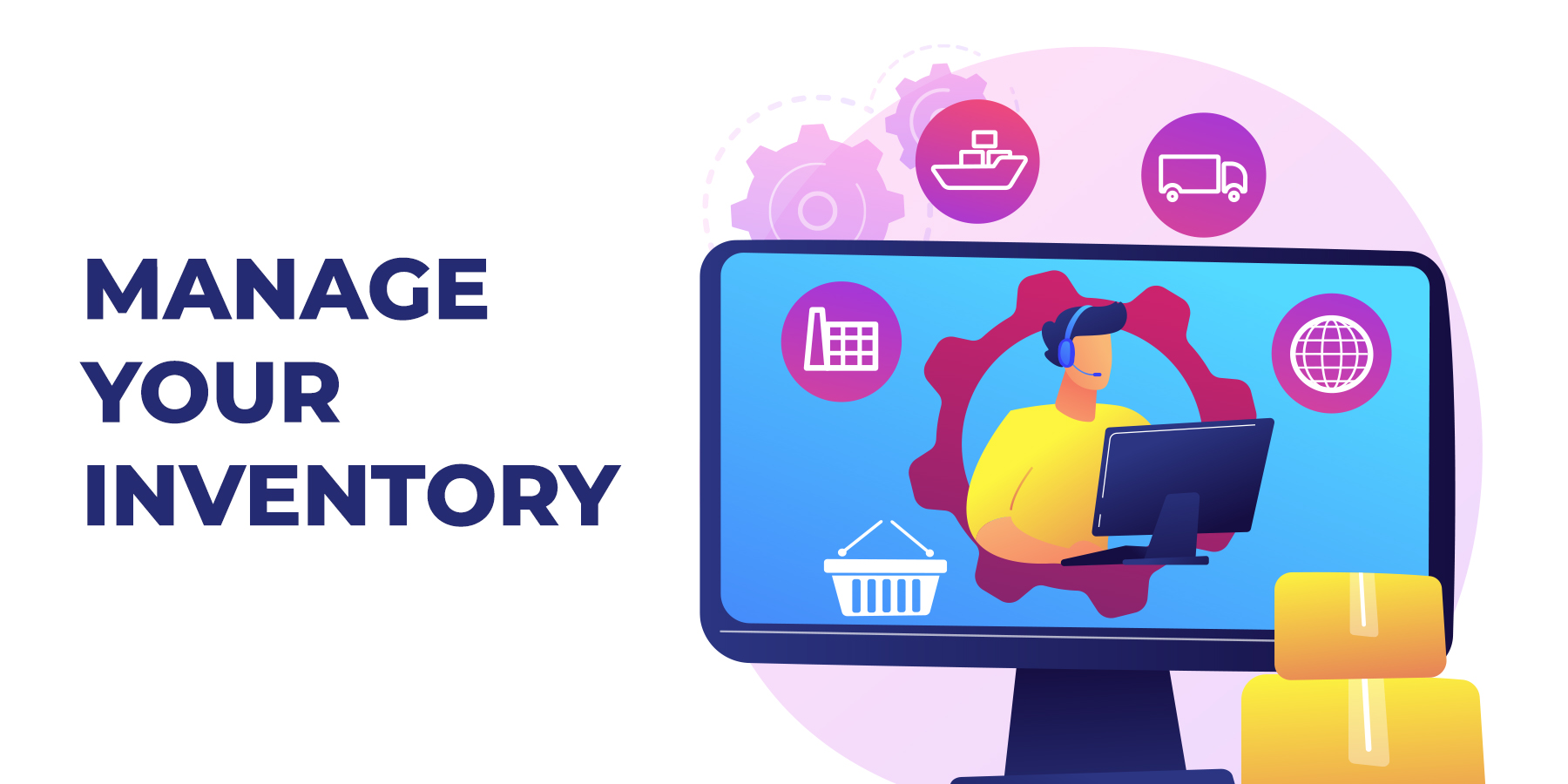The above question might have struck your mind several times if you are an Amazon seller. Effectively managing the inventory is an essential part of becoming a successful seller. By working your list, you can easily avoid significant profit killers: accruing high storage costs because of overstocking and losing sales as the products go out of stock.
Inventory management is the new backbone of the retailer businesses. It is essential to manage your inventory correctly to cut unnecessary costs and streamline your business process.
What is Inventory Management?
Inventory is the number of products a business holds to sell in the marketplace. Ecommerce Inventory management is the process of storing and tracking these products to meet the demands of the customers efficiently. It also includes strategies a business implements to source, process, and store products to prepare them for sale.
Poor Ecommerce inventory management may result in a loss of profits due to a shortage of products or the higher cost of storing overstocked products. However, the results of poor management may not be visible for a few weeks. But things may go out of control when it becomes apparent. Sellers may experience unfulfilled orders, and products may stay out of stock and lose sales, dead stock, spoiled products, or too high storage costs.
Successful ecommerce inventory management is finding the perfect balance between overstocking and shortage. Using the right strategy for your inventory, you can quickly determine how often your list needs restocking to maintain optimal levels.
Why do Amazon Sellers Need Inventory Management?
In this competitive world, customers don't wait for a product to come back in stock. Instead, they immediately start looking for alternatives if they find a product out of stock. As per statistics from JungleScout, 68% of Amazon customers from the United States expect their products to get delivered within the first three days of placing the order. Moreover, almost 50% of them are ready to pay more for faster delivery, and 70% will be upset if their product is not delivered on time.
If the product continuously goes out of delivery, customers will start looking for products from competitors. This way, sellers will lose not only sales but also organic traffic. With more customers preferring other products over yours, your listing's organic ranking will drop gradually.
Here are four reasons why Amazon sellers need to take control of their inventory:
- Attracting more sales: If the product listing constantly shows out of stock, the potential customer will prefer buying from the competitors, and you will keep losing profit as an Amazon seller.
- Reducing inventory cost: When the inventory is not managed correctly, it may have too much inventory, and sellers may have to spend more money to store unsold products.
- Reducing inventory loss: With proper ecommerce inventory management, sellers can reduce losses from inventory mismanagement, damages, spoils, and errors.
- Reducing product spoilage: If you are selling perishable products, an effective inventory management strategy can help track the sell-by and expiry date of products to avoid spoilage and reduce unsellable products.
While ecommerce inventory management is crucial for every Amazon seller, most small businesses don't have a proper ecommerce inventory management strategy. However, taking inventory control is straightforward and avoids losing profits and extra storage costs.
There are many ways you can manage your Amazon store order and inventory. Here are a few steps you can start with –
Inventory Planning
To design your inventory better, it is generally a smart thought to coordinate your item supply with the average demand. This should be possible through point-by-point gauging and planning. In straightforward terms, you have to guarantee that you aren't sourcing excessively numerous or excessively couple of items. Amazon offers multiple reports that you can use to design your inventory better.
For instance, the Amazon Selling Coach can help distinguish inventory openings in light of your deals and current inventory information. It gives customized proposals to streamline your stock levels. You can likewise see your posting status and points of interest on the oversee inventory page. This page encourages you to deal with inactive/out-of-stock postings to see how good your inventory is and how you can enhance it.
Amazon sellers who provide faster delivery of products usually experience higher conversion rates. With such a massive demand for products, it is ideal for the sellers to maintain an inventory of four-week as it will provide sellers with enough time to:
- Distribute Inventory
- Maintain timely delivery records to provide better customer satisfaction
- Reduce stock shortage and lost sales
- Avoid overstocking of products to save on storage cost
Sourcing Inventory Management
While sourcing abundance inventory may obstruct your cash as a colossal venture and adequate income, sourcing not as much as the required number may build your requesting cost and the danger of coming up short on stock amid crest demand periods.
It is prudent to make it a propensity to analyze the patterns of the past deal time frames and distinguish the future occasions that can influence your supply/demand before submitting the request with your provider. Consider consulting with various Amazon listing services given changing variables, for example, item quality, coordination ability, exchange controls (mainly while sourcing all around), esteem-included administration, and cost.
By maintaining a four-week inventory, sellers get enough time to source new products and restock their merchandise on time before the product goes out of stock.
Inventory Storage
Storing inventory demands special consideration. It is common to harm the items in warehousing tasks. Pack your items well with the goal that the article dealing with does not prompt harm. Ensure you store your inventory in a physically secure place. Ecological conditions, for example, temperature and moistness, additionally affect storage choices for various item classifications. Prepare your staff well to limit inventory administration issues.
Perishable Inventory
The First-in-First-Out component is an effective system to oversee perishable inventory or things with an expiry date. This implies the list obtained first ought to be dispatched first upon accepting a request.
This diminishes the danger of obsolete inventory and limits returns/guarantees for you in light of incidentally sending lapsed items to the clients. You should set up great distribution center administration rehearsals to actualize this system.
For perishable or aging products, you need to create an effective strategy to sell the product before they perish. Sellers can opt for Amazon's Inventory Performance Index, which provides them with recommendations like limited-time promotions and offers to sell these products quickly. Sellers can choose this feature when the stock remains unsold for over 90 days.
Final Thoughts on Inventory Management Solution
Now, you may know the importance and benefits of managing your inventory in the business. To sum up, if you plan to work your list the right way, you must find the perfect partner. Amazon Listing Services offers you the best ecommerce inventory management solutions your business desperately requires. Meanwhile, you can reach us at info@amazonlistingservice.com to find answers to all your queries and pricing details.






